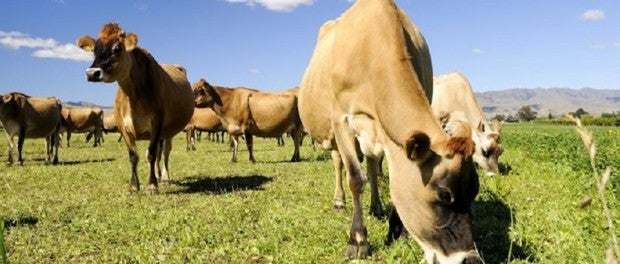Things to Consider When Choosing a Milk Cow

Choosing a Milk Cow
One of the many investments beginning farmers make is a milk cow. Having fresh milk in the fridge is wonderful thing, but coming about it does take some work. Even though there is plenty to be done after your first cow arrives, there is also work that should be done beforehand as well. This means taking care to select the right cow for your family as well as having preparations made for her arrival in terms of both a living environment and fitting her milking needs into your schedule.
Truth be told, the ability to cater to a milking schedule is probably the most important part of owning a milk cow. Milking every day at a reasonable time, ideally the same time, and sometimes even twice daily is not something that is negotiable. Therefore the first question we must ask ourselves is if we are going to be able to adhere to such a stringent schedule. There are going to be days when things come up, so you’ll need a backup plan. If you want to go out of town, having someone to take over will be necessary. These are all things you must consider before taking on the responsibility of a milk cow. It can be hard enough to get someone to feed your dog in your absence, but milking your cow is a whole different kind of request.
Before you bring a cow home, you’re going to need somewhere to house, feed, and milk her. A sturdy pen with good fencing is necessary for containment purposes as you don’t want your cow to go gallivanting as she pleases. In that pen needs to be grass and/or hay as well as a place to eat grain if you intend to grain her while milking. Beyond that you’ll need a place to milk her, such as a stanchion or somewhere similar that she can be secured for milking, ideally under a shelter because weather is not always cooperative but milking must occur regardless.
Once you are confident that you are ready for a cow in terms of both scheduling and housing, the next task is actually finding an appropriate cow. You should choose a cow depending on the size of your family and your milk consumption as different breeds produce varying amounts of milk. If you want to not only have milk to drink but also want to make cheeses and butter, then you want a cow that produces more cream, such as a Jersey. A Holstein, on the other hand, produces a lot of milk, to the tune of about eight gallons each day. If you do not have plans to use and/or store that much milk, selecting a different breed is best.
Having decided on a breed of milk cow, you next need to locate one for sale and start asking questions. For starters, ask if she’s been tested for diseases such as Brucelliosis, Johnes, TB, etc. and if those tests came back clear. Then you want to know about her temperament and how she behaves for routine handling. Ideally you want a cow that is halter broke and doesn’t kick, both of which are for your own safety and convenience. Being easy to catch in the pasture is also a huge asset; the first time you are faced with an elusive cow, you will truly appreciate one that meets you at the gate.
When choosing a milk cow it is also important to find out if the cow has a healthy udder. The reason you are buying a milk cow is in order to have milk and no one wants this to be a more complicated process than necessary, such as with a cow that is susceptible to mastitis. Check her udder for lumps and bumps or any irregularities. Ask if all four quarters work as well as if she has had mastitis before and at what frequency it may have recurred. Find out, too, if she milks by hand as well as by machine and how often (once or twice daily). Ideally you should milk her yourself before bringing her home so you can get a feel for all of this yourself.
Since it is essential for a cow to have had offspring in order to come into milk, the milk cow you’re looking at will have obviously had a calf if you’re able to milk her. You’re going to want to know when she calved and if she had any trouble doing so. It is also important to take into account breeding her; depending on how long it’s been since she had a calf, you may need to get her bred again quite soon, which means having access to a bull or having her artificially inseminated. Beyond that, you must remember that cows need to be dried up 60 days before a calf is born and that their gestation period is nine months. After calving, heat cycles will resume in about two or three months, all of which needs to be considered as part of your long term milk plan.
When you look at the big picture, it is certainly possible to feel a little overwhelmed. There is a definite recipe that goes into buying and caring for a milk cow, but it is one that can be achieved with dedication. Plus, once the journey is underway, smooth sailing will come. The trick is establishing a routine that works for you and your new family member so everyone will be happy, healthy, and drinking milk.





 Your Privacy Choices
Your Privacy Choices
Excellent Article! Thank you.